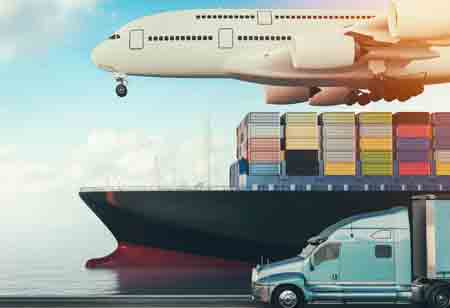THANK YOU FOR SUBSCRIBING
THANK YOU FOR SUBSCRIBING

By
Logistics Transportation Review | Wednesday, July 10, 2024
Stay ahead of the industry with exclusive feature stories on the top companies, expert insights and the latest news delivered straight to your inbox. Subscribe today.
Stakeholders must anticipate future trends in the LTL shipping industry to stay competitive and adapt to its evolving landscape.
FREMONT, CA: The Less-than-Truckload (LTL) sector is crucial in transporting smaller freight shipments efficiently and cost-effectively. However, it faces various trends and challenges. Stakeholders must anticipate future trends to prepare for the evolving LTL industry. By embracing technological innovation, prioritizing sustainability, optimizing last-mile delivery solutions, addressing capacity constraints, meeting customer expectations, and navigating regulatory landscapes, LTL carriers can position themselves for success in a competitive market. Proactively addressing these trends can drive efficiency, reduce costs, and improve customer experience in the LTL shipping sector.
Technology Integration:
LTL shipping is only one aspect of the logistics sector that is being revolutionized by technology integration. Technological developments in tracking and tracing systems, digital goods matching platforms, and route optimization algorithms improve the LTL industry's visibility, efficiency, and transparency. We may anticipate more technological advancements in artificial intelligence (AI) and the Internet of Things (IoT) to optimize operations and enhance decision-making.
Sustainability Initiatives:
As environmental concerns become increasingly prominent, sustainability initiatives are gaining traction across all industries, including logistics. In the LTL sector, stakeholders are exploring ways to reduce carbon emissions through route optimization, modal shifts to more eco-friendly transport modes, and investments in fuel-efficient vehicles. We anticipate a continued emphasis on sustainability as both a corporate responsibility and a competitive advantage in the LTL industry.
Last-Mile Delivery Solutions:
E-commerce has led to growing demand for efficient last-mile delivery solutions, presenting challenges and opportunities for LTL carriers. LTL providers are investing in technologies and infrastructure to optimize last-mile operations to meet online shoppers' expectations for fast and convenient delivery. Drone delivery, autonomous vehicles, and micro-fulfillment centers are among the innovations shaping the future of last-mile logistics in the LTL space.
Capacity Constraints:
Capacity constraints have been a perennial challenge in the LTL industry, exacerbated by driver shortages, fluctuating freight volumes, and regulatory constraints. Looking ahead, stakeholders will need to address these capacity constraints through strategies such as workforce development, collaboration with shippers to optimize freight consolidation, and investments in infrastructure and equipment. Dynamic pricing models and flexible capacity solutions can help LTL carriers navigate capacity fluctuations more effectively.
Customer Expectations:
In an era of heightened customer expectations, LTL carriers are pressured to provide reliable and cost-effective shipping services and enhanced visibility and transparency throughout the supply chain. Customers expect real-time tracking updates, proactive communication, and flexibility in delivery options. To meet these evolving expectations, LTL providers must prioritize investments in technology, customer service, and operational excellence.
Regulatory Landscape:
The transportation sector's regulatory framework constantly changes, impacting LTL carriers regarding environmental standards, labor laws, and compliance. It will be crucial for LTL stakeholders to anticipate and adjust to regulatory changes to stay compliant and competitive. Active participation in industry associations and policymakers can assist in developing rules that strike a balance between sustainability, efficiency, and safety.
I agree We use cookies on this website to enhance your user experience. By clicking any link on this page you are giving your consent for us to set cookies. More info





